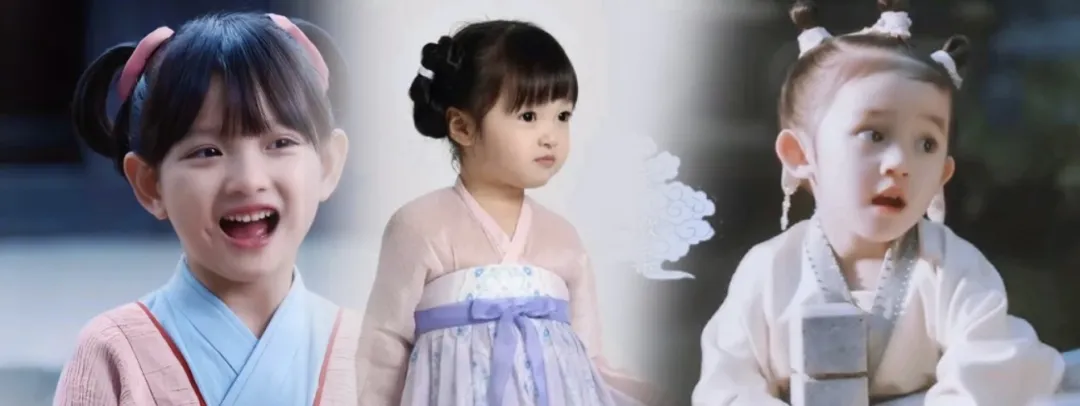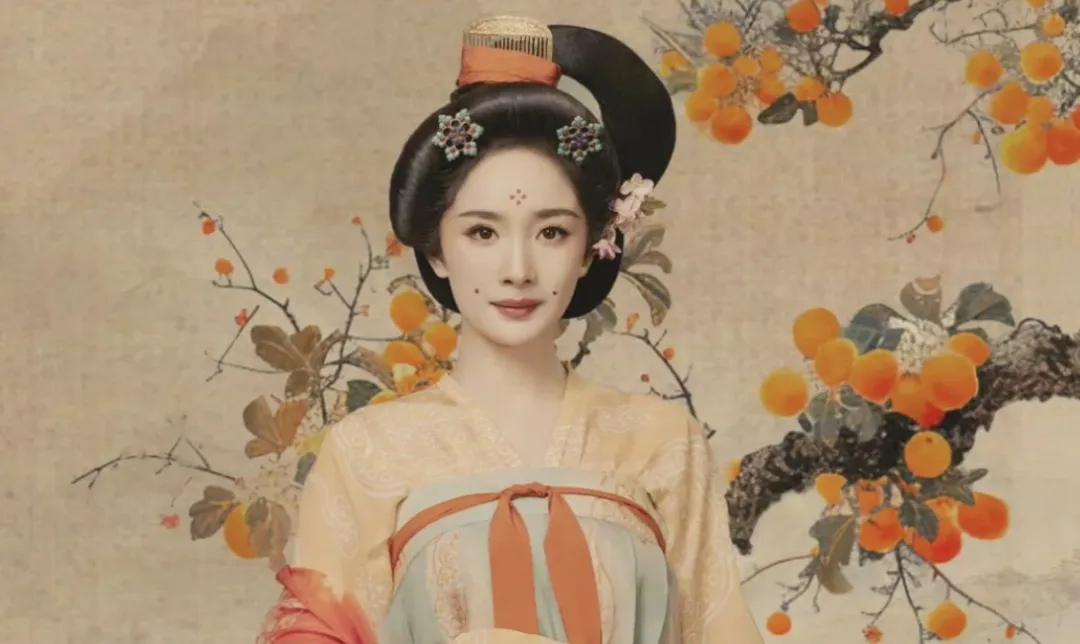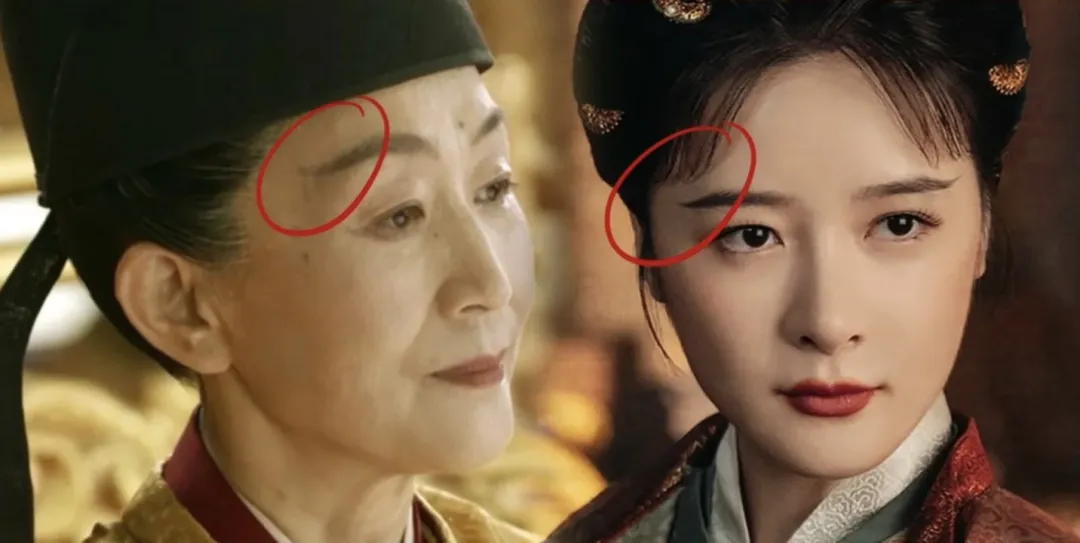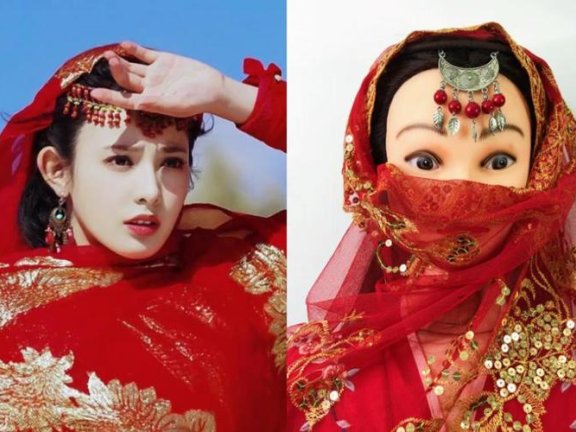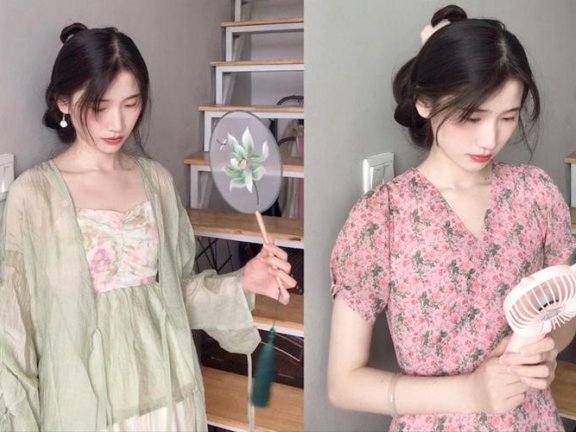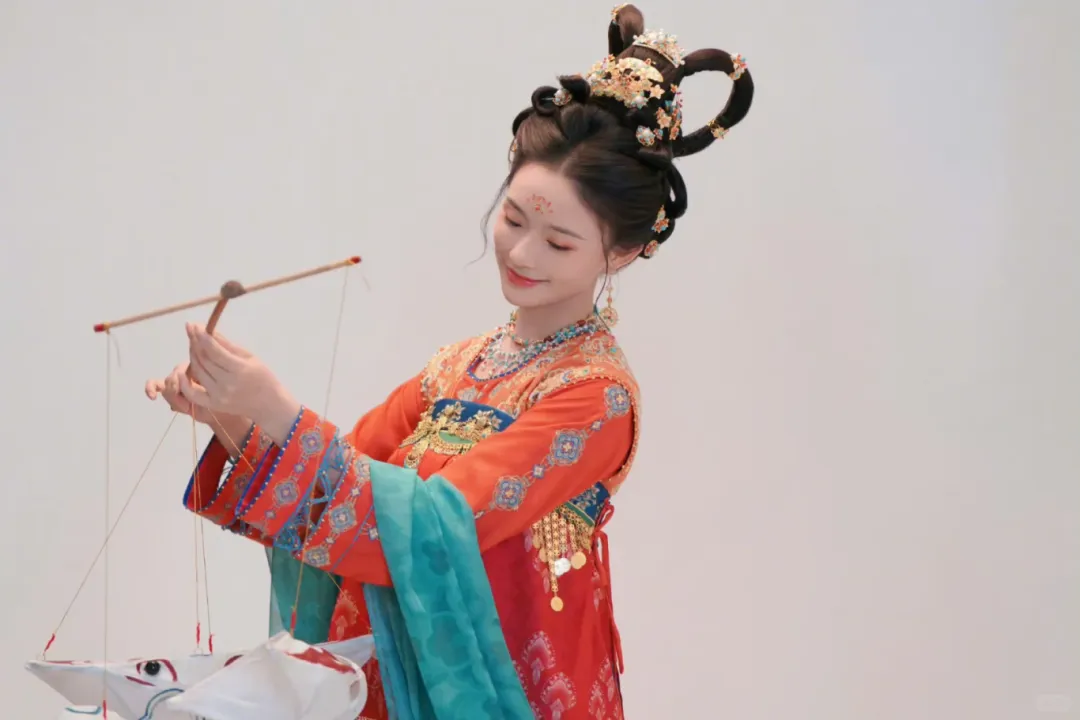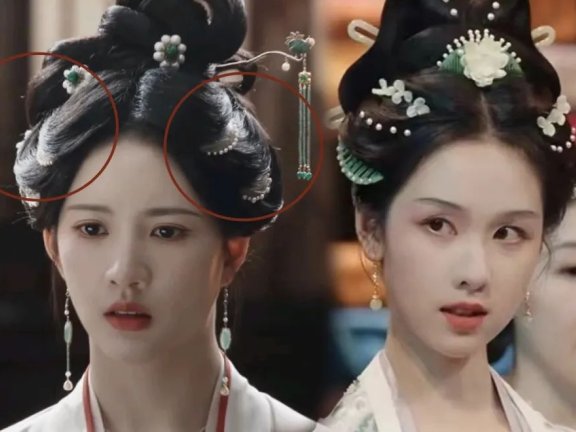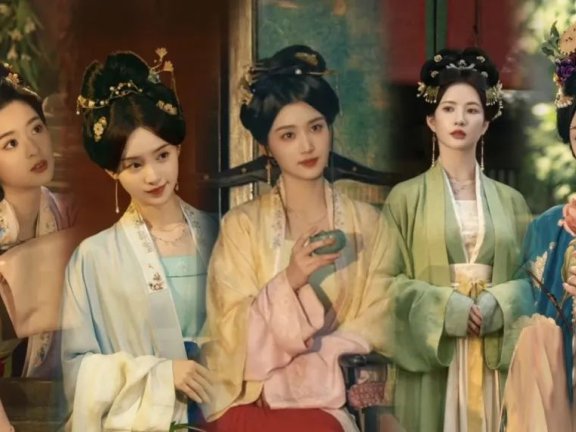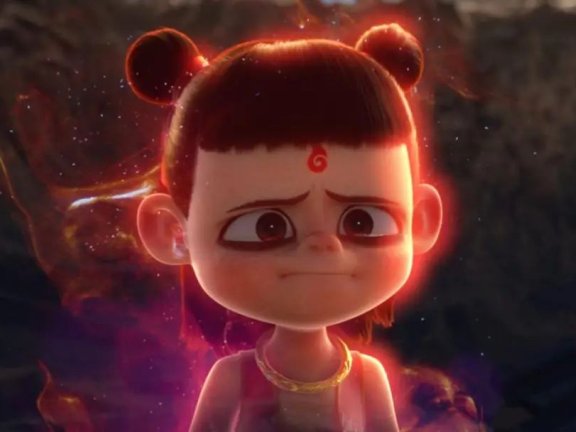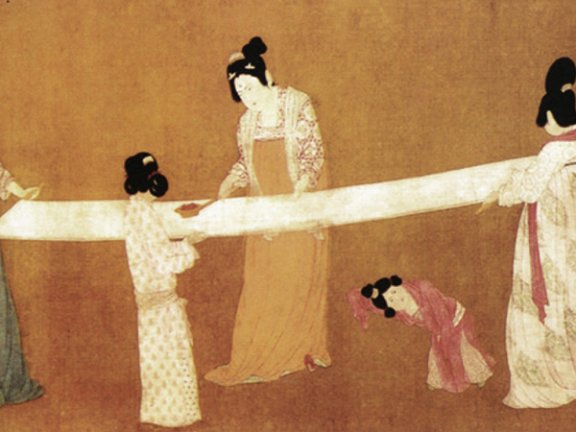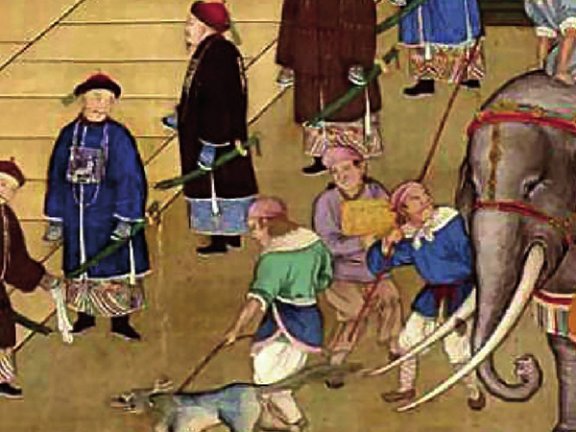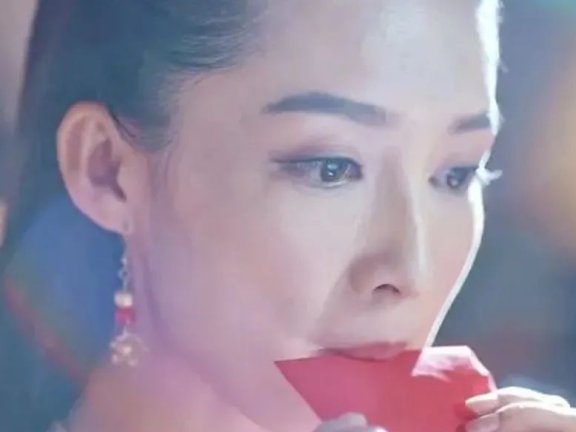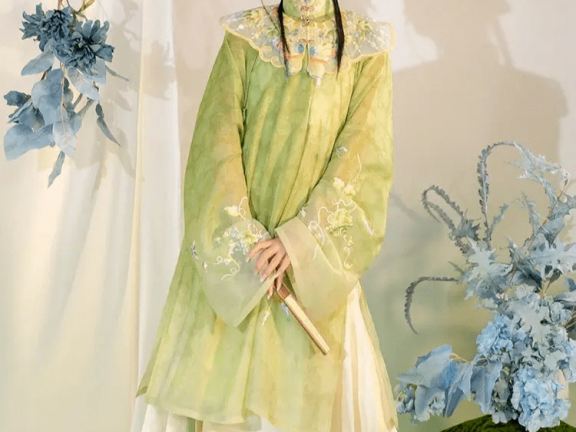-
Hairstyles for Kids in Historical Cdrama
Finally, in historical dramas like 'Family Business,' 'National Beauty and Fragrance,' and 'Joy of Life,' the appearance of many child characters has sparked netizen discussions: 'So this is how ancient children looked!' Let's start with the conclusion. Ancient children generally went through stages of shaving, growing, and tying their hair. Their hairstyles varied, similar to how kids grow today. Parents, take note: children wearing Hanfu don't need adult hairstyles; it's not awkward at all. Did you also dream of dressing and styling like adults as a kid? But it was just a fantasy. Some historical dramas, for dramatic effect, often give children adult hairstyles and even add crowns, turning them into 'mini - adults' without childlike charm. Ancient children usually tied their hair into buns around ages 15 - 16, when boys reached 'weak crown' (coming - of - age) or girls 'hairpin' (adulthood). Before that, they mostly wrapped their hair in colorful cloth, showing their playfulness and cuteness. Let's explore further. At first, children's hair was mostly fine 'fetal hair.' They often shaved and regrew it, as seen in ancient paintings. The top hair was usually styled into an inverted triangle, called 'tiáo.' You can feel the scene of… -
Yang Mi’s Tang Dynasty Makeup: The Story Behind the Two Red Dots
The Red Dots: More Than Just Decoration In the upcoming drama Lychees of Chang’an, Yang Mi’s Tang Dynasty-inspired makeup has sparked curiosity—particularly the two red dots near her lips. These are no random embellishments. Known as mianye (面靥, pronounced "myan-yeh"), they trace back to the Han Dynasty (206 BCE–220 CE) and evolved into a symbol of sophistication during the Tang era (618–907 CE). Historical records, like Shuowen Jiezi (说文解字), define mianye as decorative marks near the dimples. Initially called dì (旳), they later took diverse forms—dots, crescent moons, floral shapes—and materials like gemstones, gold foil, or even dried botanicals. For example, Lingbiao Luyi (岭表录异) mentions using pressed flowers as eco-friendly alternatives. One theory links mianye to palace life. Concubines allegedly used these dots to discreetly signal menstruation, avoiding imperial duties. Over time, the practice trickled down to commoners, transforming into a beauty statement . By the Tang Dynasty, creativity soared: dots expanded to foreheads and temples, morphing into huadian (花钿, floral motifs) and zhenzhu zhuang (珍珠妆, pearl-studded designs). These weren’t just pretty—they softened facial lines, offering a timeless anti-aging hack. Tang women embraced maximalism. Imagine gold leaf swirls, ruby-studded cheeks, or peony-shaped mianye—all while maintaining harmony. Dunhuang murals reveal how…- 0
- 0
- 20
-
The Power of Upward-Sweeping Eyebrows in Ancient Chinese Makeup
In the historical cdrama, actors Chen Jin and Xu Jiao portray characters with distinctive eyebrow styles that exude an undeniable aura of authority. Unlike conventional female characters whose eyebrows taper downward or remain straight, their eyebrow tails sweep dramatically upward. This unique style, known as Hanyan Mei (涵烟眉) or Fuyun Mei (拂云眉), was particularly popular during the early Tang Dynasty through the Wu Zhou period. Characterized by sharp inner corners and finely separated hairs at the tails, this eyebrow style sometimes featured a narrower, more arched peak, also referred to as Yuanshan Mei (远山眉). Ancient Chinese literature, such as the Fengguang Ci by a Tang Dynasty poetess, describes these eyebrows as ethereal as mist or drifting clouds. Their upward sweep not only added a touch of independence and confidence but also became a defining feature in murals and paintings from that era. Compared to the softer Juan Yan Mei (罥烟眉), Hanyan Mei was bolder and more vibrant, leaving a lasting impression. Modern adaptations in film and television have softened its intensity, blending strength with elegance. Modern Applications and Tips This eyebrow style, often seen in strong female roles like those in Zhang Xin, enhances facial structure by filling the temple… -
Wearing Hanfu as a Hijabi: Modesty, Style, and Cultural Fusion
One of the joys of wearing hanfu is discovering how effortlessly it can be adapted to different lifestyles, beliefs, and personal preferences. As a hijabi, one of my biggest considerations when choosing clothing is modesty. Thankfully, many hanfu styles already cater to this ideal with their long, flowing silhouettes, layered structures, and elegant designs. In fact, I’ve found hanfu to be one of the easiest traditional outfits to wear while staying true to both my modesty and aesthetic preferences. Although some hanfu styles are more fitted around the waist or involve shorter sleeves or lower necklines, there are many that work beautifully for hijabis without needing any extra modifications. Personally, I’m especially drawn to Ming dynasty style hanfu. These often feature a mamianqun skirt paired with either a shorter shirt (duijin shan) or a longer robe-style shirt (aoqun or dachang), both of which are generously cut and non-revealing. The fabrics drape naturally, the overall silhouette is loose, and the layering makes it feel effortlessly modest. The added bonus? Mamianqun prints are just stunning. The way the pleats open and close as you walk, revealing flashes of the pattern, creates a sense of movement and beauty that makes me feel elegant…- 1
- 0
- 41
-
Wearing Hanfu to Work: A Practical Guide for Women
In recent years, there’s been a surge of interest in hanfu, not just as traditional attire, but as something that can be part of everyday life—including the workplace. For women who love hanfu and want to express that part of their identity in professional settings, there are more options now than ever before. With both modernised and traditional hanfu being widely available online, it’s becoming increasingly realistic to integrate this historical clothing into our weekday wardrobes. Modern hanfu—sometimes referred to as “fashion hanfu”—has already been adapted for casual social use. According to NewHanfu, it “inherits the elements of traditional Hanfu, and through long-term innovation and development, it is well adapted to the convenient social life in today's modern times.” This means pieces are typically more streamlined, accessible, and comfortable, often made with materials and cuts that suit daily wear. As a result, many modern hanfu outfits can already pass for smart-casual in a workplace setting. Pairing these with accessories like a structured purse, a watch, or a blazer can easily help elevate the outfit to look more professional without compromising the hanfu aesthetic. That said, I personally think there’s also space for more traditional hanfu elements in the workplace—if styled…- 0
- 0
- 50
-
Lin Yun: The Most Fairy-like Ancient Hairstyle Revealed
The Evolution of Shuang Huan Wangxian Ji The hairstyle, known as Shuang Huan Wangxian Ji (双鬟望仙髻), has been hailed as the most iconic and popular fairy-like hairstyle, transcending age and time. Originating from the Shuang Huan Ji (双环髻), this hairstyle was initially designed for young girls. However, its ethereal beauty made it a frequent feature in divine paintings, such as the renowned Luoshen Fu Tu (洛神赋图) and the Eighty-Seven Immortals Scroll (八十七神仙卷). Over time, it evolved into a cultural phenomenon. During the Wei, Jin, and Southern and Northern Dynasties (魏晋南北朝), the high bun with double rings was prevalent. By the early Tang Dynasty (初唐), the Shuang Huan Wangxian Ji began to take shape, characterized by its round and full appearance. The hairstyle ranged from modest daily buns to exaggeratedly large ones, sometimes even matching the length of a face. By the mid-to-late Tang Dynasty (中晚唐), the contours of the hairstyle became wavy, adding a dynamic charm to its otherwise simple form. Popularity Across Dynasties In the Song Dynasty (宋代), this hairstyle became a fashion trend among commoners. Women adorned it with pearl accessories and simplified its originally exaggerated height, making it more wearable for daily life. However, by the Ming… -
The Mystery of the Hairpin Flower in Court Ladies
The Court Ladies Adorning Their Hair with Flowers painting has inspired numerous costume dramas, including Dream of Splendor, National Beauty and Fragrance, and Peaceful Year. But how accurate are these adaptations? Let's delve into the authentic portrayal of court ladies from the Five Dynasties period. The Iconic Hairstyle and Its Origins The hairstyle seen in these dramas is inspired by the noblewomen depicted in Zhou Fang's (disputed authorship) Court Ladies Adorning Their Hair with Flowers. Characterized by towering buns adorned with hairpins and floral decorations, it exudes elegance. However, the clothing patterns and styles suggest a late Tang or Five Dynasties origin rather than the Tang Dynasty. Floral Patterns: Tang vs. Five Dynasties There's a noticeable difference between the floral patterns of the High Tang and late Tang/Five Dynasties. High Tang designs feature clustered, cohesive flowers, while late Tang/Five Dynasties styles are more scattered with paired flowers and leaves. This distinction helps date the painting to the late Tang or later. The Hairpin Flower Controversy Shen Congwen speculated that the prominent hairpin flowers might have been added by Song Dynasty artists. The painting shows women with loose, cloud - like hair adorned with golden hairpins, making the addition of large…- 0
- 0
- 21
-
The Art of Ancient Chinese Yunbin Hairstyles
In modern times, people often think of bangs as the only way to decorate the forehead. However, in ancient China, there were various methods such as sticking Huadian (花钿), wearing forehead scarves, headbands, or applying forehead decorations. Today, let's talk about Yunbin (云鬓), a hairstyle made directly from one's own hair to cover the hairline. Yunbin, commonly seen in the Song Dynasty, is also known as Yun Jian Qiao E (云尖巧额). It involves curling a few strands of hair on the forehead or temples to create a layered, cloud-like effect. This not only helps to cover the hairline and temples but also adds a touch of elegance and grace to a woman's appearance. As described in The Ballad of Mulan: "She combs her cloud-like hair by the window and adorns her forehead with yellow flowers." According to Feng Chuang Xiao Bu from the Song Dynasty, "During the Chongning period, people preferred large bangs and square foreheads. By the Zhenghe and Xuanhe eras, tight buns hanging to the shoulders were in vogue. After the Xuanhe period, Yun Jian Qiao E and golden phoenix hairpins became popular." This shows how ancient Chinese used their own hair to create various styles, including Yunbin,… -
The Makeup and Costumes in Five Blessings
Fans have pointed out that it's hard to distinguish characters in the drama 'Five Blessings' due to the overly similar makeup and costumes. Despite the actors' good looks, the lack of individuality in their styling makes them blend together, leading to visual fatigue. The issue isn't just limited to facial features; even from a distance, characters are indistinguishable because of their nearly identical outfits and hairstyles. The female characters, without exception, sport center - parted bangs with either a single or double bun, occasionally varied by additional hair accessories. Their eye makeup, eyebrows, and lip colors are almost identical. The costumes predominantly feature Beizi (褙子) from the Southern Song Dynasty, with occasional Northern Song - style cross - collar robes and wide - sleeved gowns. The fabrics and color schemes are so uniform that even changes in a character's marital status—like switching from loose hair to an updo—fail to make a noticeable difference. This problem isn't unique to 'Five Blessings.' Many modern historical dramas prioritize template - based styling over character - specific designs, reinforcing cultural stereotypes. Unlike dramas such as 'National Beauty' or 'Pearl Curtain,' where each character's makeup and costumes evolve with their roles and settings, 'Five Blessings'…- 0
- 0
- 41
-
Why Nezha Always Has Bun Hairstyle?
The recent release of 'Nezha: The Devil Boy's Havoc' (Nezha 2) has reignited discussions about the iconic bun hairstyle that seems to define Nezha's appearance across various adaptations. Is it a coincidence or a stereotype? Netizens joke: 'Nezha can change his fate, but not his hairstyle.' The origin of the 'bun hairstyle' can be traced back to ancient China, where it was one of the many hairstyles popular among women. Its roots lie in the 'double bun' style, which was highly fashionable during that era. Excavated pottery figurines vividly depict the societal admiration for delicate feminine beauty. This trend even influenced ancient Japanese fashion, particularly during the Nara period. Historical dramas like NHK's 'The Great Buddha Opening Eyes,' set in Nara, showcase characters adorned with Tang Dynasty - inspired double - bun hairstyles. In Chinese history, children's double - bun hairstyles were referred to as 'Zongjiao.' Ancient texts emphasize the importance of preserving one's hair as a sign of filial piety. From around eight or nine years old, Han children, regardless of gender, would part their hair into two small buns resembling horns, hence the name 'Zongjiao.' Girls' buns were often styled like branching twigs, known as 'Yaji,' which led…- 0
- 0
- 35
-
Wang Churan's Hanfu Style Sparks Debate on Traditional Hairstyle
During the CCTV program 'Golden Snake Dance • Chinese New Year Flavor,' Wang Churan appeared in traditional Hanfu attire, but her hairstyle raised eyebrows among some netizens. They questioned whether the two strands of hair in front resembled the Japanese 'hime cut.' To clarify, this hairstyle, known as 'Chuixiao Ji,' can be traced back to ancient Chinese paintings like 'The Admonitions Scroll' and 'The Wise and Benevolent Women.' It was popular during the Han and Jin dynasties, with origins dating back to the Warring States period. The hairstyle features neatly trimmed bangs that reach the eyebrow line, with strands hanging down the sides, a style also referred to as 'Fenxiao.' Historical artifacts, such as the jade dancer figurine from the Jin Village Tomb in Luoyang, depict this hairstyle, showcasing its cultural significance. Wang's headpiece, a gold 'Buyao' (hair ornament) from Liangzhou, Gansu, is styled as 'One Sparrow, Four Flowers,' symbolizing nobility during the Han Dynasty. The Buyao was typically worn in pairs, swaying with movement, embodying the elegance of noblewomen from the Han to Wei - Jin periods. The Chuixiao hairstyle not only framed the face but also reflected the ethereal aesthetic influenced by Confucian and Daoist ideals. However, modern…- 0
- 0
- 14
-
The Tang Dynasty Hairstyles: Hair Buns Wrapping Face
Have you ever wondered why women in Tang Dynasty-themed films and TV shows often appear 'top-heavy'? It's not an illusion! In classical makeup and styling, the hairstyles of the mid to late Tang Dynasty are famously referred to as 'big heads.' But why? Just take a look at the number of hair buns atop their heads. The trend of 'big heads' actually began to emerge as early as the late Eastern Han Dynasty, when noblewomen started favoring high buns, considering them a mark of beauty. The Tang Dynasty took this trend to its peak, leading to the creation of various types of artificial hairpieces (Yiji) specifically for high buns. What did women do if they wanted to achieve this look but lacked enough hair? They simply wore artificial hairpieces. Common materials for Yiji included real hair or wooden substitutes. For example, this spiral-shaped Yiji was made from 'fake hair,' lined with hemp cloth, wrapped with palm fibers, and dyed to create a spiral shape. It could be easily pressed onto the head, showcasing both antiquity and craftsmanship. The materials for Yiji were diverse, not limited to real hair. Thin wooden pieces were also used. One such example is the lacquered…- 0
- 0
- 45
-
The Ancient Hairstyles of Young Maidens in Historical Dramas
In the historical drama 'Guo Se Fang Hua,' the portrayal of Yulu's maid has left a deep impression on viewers. Many netizens have humorously remarked, 'Did this hairstyle escape from a museum?' Indeed, the double - bun hairstyle, a signature look for young maidens in ancient times, holds a special place in traditional aesthetics. This hairstyle, known as Shuang Ji (双髻), was commonly worn by unmarried women, palace maids, and young servants, symbolizing youth and innocence. The Shuang Ji can be further categorized based on its shape and drooping style, such as Shuang Huan Ji (双鬟髻), Shuang Luo Ji (双螺髻), and Shuang Ya Ji (双丫髻). The foundational feature of this hairstyle is the division of hair into two equal parts, creating a symmetrical look. Each side is meticulously coiled into a small bun, typically positioned on either side of the head. The drooping version is poetically referred to as 'Shuang Chui Ji' (双垂髻). Additionally, variations like the Mao Ji (卯髻), characterized by its crescent shape, and the Huan Ji (鬟髻), featuring ring - like buns, add diversity to this traditional style. The Huan Ji often appears in pairs but can also be seen in multiples, with three or more buns… -
The Ancient Chinese Drunk Blush Makeup Trend
Have you ever wondered why some classical Chinese portraits depict women with strikingly red cheeks that almost look like bruises? This distinctive look is actually an intentional and celebrated makeup style from ancient China called Jiuyun Zhuang (酒晕妆), or "Drunk Blush Makeup." This bold cosmetic trend originated during the prosperous Tang Dynasty (618 - 907 AD), particularly popular during Empress Wu Zetian's reign. The style involved applying vibrant red pigment across large portions of the face - not just the cheeks, but often extending to the eyelids, jawline, and even ears. Historical records from the Zhuangtai Ji (妆台记), an ancient Chinese cosmetic manual, describe three intensity levels of this look: the most dramatic Jiuyun Zhuang (Drunk Blush), the softer Taohua Zhuang (Peach Blossom Makeup), and the subtle Feixia Zhuang (Flying Sunset Makeup). Beauty Standard of the Time What modern eyes might perceive as excessive was actually a sophisticated beauty standard of its time. The warm Wozhe (渥赭) hue - a traditional pigment made from cinnabar and ink - served multiple purposes: enhancing healthy complexion, creating facial dimension, and projecting an image of vitality. During mid - Tang period, women often paired this look with bold eyebrows for an even more…- 0
- 0
- 40
-
How Real Is the Qixiong Ruqun?
There’s a certain kind of outfit that turns heads, not just because it’s beautiful, but because it leaves people wondering: Is this really how ancient people dressed? Enter the Qixiong Ruqun (齐胸襦裙), a style of Hanfu where the skirt is tied all the way up to the chest—sometimes even under the armpits. It’s dramatic. It’s feminine. And it’s sparked years of debate over whether it’s based on history or pure fantasy. The Rise of a Silhouette That Defies Gravity At a glance, the Qixiong Ruqun feels like a distant cousin of the Korean Chima Jeogori—a wide-skirted dress worn high on the torso, paired with a short jacket. In fact, when you fluff out the skirt and widen the waistband, the two styles can look eerily similar. But the rabbit hole runs deeper than visual resemblance. Questions around the Qixiong Ruqun don’t just come down to aesthetics. They ask something more fundamental: How do you even keep this thing from sliding down? Anyone who’s tried wearing one has likely felt that awkward sensation—the pull of gravity on a waistband that doesn’t seem to be anchored to anything solid. It’s not a minor wardrobe inconvenience. It’s a design flaw. And it’s raised…- 1
- 0
- 52
-
How Ancient Warriors Invented the First Pants
If you opened your wardrobe today and found not a single pair of pants, chances are you'd be horrified. Pants are so essential to modern life that we rarely stop to think about their origins. But dig a little into the dusty archives of history—or better yet, into ancient tombs—and you’ll discover that the invention of pants was not only a practical breakthrough but a sartorial milestone born from the needs of a changing world. Layers, Loops, and Crotches: How Ancient Chinese Dressed Forget the meme-worthy myths about ancient Chinese courtiers inventing pants to manipulate palace intrigue. There’s a rumor that during the Western Han dynasty, a powerful official named Huo Guang (霍光) came up with the idea of pants with crotches to help his granddaughter win the emperor’s favor by sabotaging the rest of the harem. Entertaining? Absolutely. True? Not really. The real story is messier, more fascinating, and rooted in functionality. The word “pants” in ancient China didn’t mean what it means now. You had “ku (袴 or 绔),” which referred to garments covering the lower leg, basically like gaiters or leg warmers. Then there was “kun (裈),” which were crotched garments that wrapped the lower body and… -
Draped in Dynasty: Tang Female Attire
In Tang Dynasty China, women’s fashion followed a consistent formula: a layered ensemble of shan (衫, a short top), ru (襦, a lined jacket), ku (袴, trousers or leggings), and qun (裙, skirts), often draped with a long, flowing pei (帔, a silk stole). But like modern trends, styles evolved—shifting from slim, fitted cuts in the early Tang to voluminous, relaxed silhouettes by the late Tang. This piece traces the evolution of women’s fashion across the Sui, Tang, and Five Dynasties. Each section opens with a vignette inspired by legendary figures—like the runaway courtesan Hongfu (红拂), the politically savvy Shangguan Wan’er (上官婉儿), or the tragic beauty Yang Yuhuan (杨玉环)—paired with reconstructions of their likely outfits. Drawing from archaeological finds, paintings, and sculptures, we’ve pieced together how these women might have dressed. But first, a primer on Tang textiles. The Fabric of Tang Fashion Silk fabrics were woven from intersecting threads: jing (经, warp, the lengthwise threads) and wei (纬, weft, the crosswise threads). Variations in these threads created intricate patterns. 1. Plain Weaves: Juan & Shi Juan (绢): A basic plain-weave silk, utilitarian and widely used. Shi (絁): Similar to juan, but with uneven weft threads, creating subtle horizontal stripes.… -
Ancient Chinese Fashion: A Misunderstanding of Seasonal Wear
When we think about ancient Chinese clothing, a curious misunderstanding often arises—many believe that the clothing of specific dynasties was determined by the seasons. For instance, people sometimes think of Tang Dynasty garments as summer wear, and Ming Dynasty attire as winter clothing. The idea seems odd at first, as we know that every era experienced all four seasons, so why would the clothing of one dynasty be associated with just one temperature? It turns out that this perception stems from a combination of misinterpretations and misconceptions about the nature of ancient Chinese garments. Let’s break down why this understanding doesn’t quite hold water. The Tang Dynasty: More Than Just Summer Fashion The Tang Dynasty is often associated with light, airy, and flowing garments, especially the famous "Qixiong Ruqun", which has become iconic in many representations of ancient Chinese fashion. This lightweight attire—made from silk and other fine materials—gives the impression of being suited for hot weather. But the truth is, Tang fashion wasn’t just about comfort during the heat. A deeper look reveals that many Tang garments, although appearing simple, actually consisted of several layers, which weren’t always visible on the surface. The illusion of "light" clothing in modern…- 0
- 0
- 36
-
The Art of Huadian in Ancient Chinese Beauty
Have you ever thought that Huadian (花钿) were merely painted on? Sharp - eyed netizens have discovered that the Huadian in the drama 'Guo Se Fang Hua' are actually three - dimensional. Compared to painted ones, these gemstone Huadian showcase more intricate details and textures. To begin with, the Huadian worn by ancient Chinese women were not only vibrant in color but also diverse in materials. Beyond the traditional cinnabar outlines, they included gold foil, gemstones, pearls, and kingfisher feathers. During the Tang Dynasty, it was quite common for women to adorn their foreheads with Huadian. Historical records, such as Tang Li Fuyan's 'Xu Xuan Guai Lu·Ding Hun Dian,' mention Wei Gu's wife who 'always wore a Huadian between her eyebrows, never removing it even during baths or leisure.' By the Five Dynasties and Ten Kingdoms period, some women even covered nearly their entire faces with Huadian, reflecting the trend's popularity. For instance, red Huadian, outlined with cinnabar, were so vividly colored that Tang poet Bai Juyi wrote in 'Banquet at Zhou Hao's Guangfu Residence': 'Red cherries pale in comparison to the Huadian's brilliance.' Gold foil Huadian, also known as 'Jindian' (金钿), were so delicate they resembled cicada wings, earning…- 0
- 0
- 38
-
Ancient Chinese Lipstick: Beyond the Paper Stunt
In countless historical dramas, we often see female characters pressing a red paper to their lips for instant color. This raises an intriguing question: Was this actually a historical practice? The answer reveals far more sophistication in ancient Chinese cosmetics than modern audiences might assume. Ancient China developed lip color products called Kouzhi (口脂) or Chunzhi (唇脂) as early as the Northern Wei Dynasty. Agricultural scientist Jia Sixie documented their production in Qimin Yaoshu: "When marrow is scarce, blend with beef tallow. Without marrow, tallow alone suffices. Steep cloves and patchouli in warm wine. Simmer with equal parts moisture - retaining agents, adding artemisia for color enhancement. Filter through silk into porcelain or lacquerware to solidify. For lip balm, mix with vermilion and wrap in green oil." Historical lip colors included: 💄 Jiangse (绛色): The quintessential "China red" described in Shuowen Jiezi as "grand crimson," immortalized in poetry like "Silent are the crimson lips and beaded sleeves." 💄 Zhuhong (朱红): A red - orange hybrid resembling imperial palace walls, praised as "Fragrant balm precedes vermilion lips' movement." 💄 Tanse (檀色): A light mauve akin to modern nude shades, depicted as "Delicate green imprints eyebrow traces, while pale tan tints fading…- 1
- 1
- 76
-
Crafting a Traditional Horse-Face Skirt – Threads of Time and Technique
To create a traditional horse-face skirt is to converse with centuries of artisans. This process, honed during the Ming Dynasty and refined in the Qing era, transforms raw fabric into a cultural statement. Far from a simple garment, each skirt embodies calculated geometry, symbolic motifs, and generational wisdom—a wearable archive of Chinese craftsmanship. Material Selection Traditional skirts begin with fabric choices steeped in regional logic. Ming artisans preferred luo silk, a lightweight yet durable weave that allowed pleats to hold their shape without stiffness—ideal for Jiangnan’s humid climate. Qing tailors often opted for kesi tapestry silk for outer panels, its slit-tapestry technique enabling photorealistic embroidery. Modern recreations face ethical dilemmas: while purists source wild mulberry silk from historic Zhejiang farms, eco-conscious brands like Vermillion Phoenix now use organic hemp dyed with tea leaves to mimic antique hues. Pattern Drafting: Geometry in Service of Grace The four-panel template follows strict proportional rules. A typical Ming skirt for a woman of 165cm height requires: Two outer panels: 50cm wide x 105cm long Two inner panels: 30cm wide x 105cm long Waistband: 8cm wide x 110cm (allowing overlap) Historic pattern books like the Yuanyang Pu (1627) reveal secret adjustments: a 3° outward flare on outer panels to enhance the “horse face”…- 3
- 1
- 97
-
Zhao Lusi's Tang Style Evolution in Pearl Curtain and Jade Screen
Zhao Lusi's latest Tang Dynasty-inspired look in 'Pearl Curtain and Jade Screen' has fans reminiscing about her iconic Le Yan (乐嫣) character from 'The Long Ballad' (长歌行). While both styles draw from the Tang Dynasty aesthetic, there are notable differences that showcase her versatility in portraying historical roles. Le Yan's Hairstyle in 'The Long Ballad' In 'The Long Ballad', Zhao's Le Yan character sported the classic 'Bunny Ear' hairstyle, known as Baiheji (百合髻) or Lily Bun. This double-bun style, often with a center part or crisscross design, was popular during Emperor Taizong's reign (627 - 649 AD). Historical records from Ma Gao's 'Notes of Past and Present China' describe it as one of the signature hairstyles of early Tang Dynasty, perfectly complementing Zhao's sweet and youthful appearance. Hairstyle in 'Pearl Curtain and Jade Screen' The 'Pearl Curtain and Jade Screen' presents a more mature interpretation of Tang fashion. Zhao's character wears a single bun hairstyle, reminiscent of the Qiu Ji (囚髻) or Prisoner's Bun popular in mid - late Tang Dynasty. The styling features thinner, more voluminous sideburns creating a 'Chan Bin' (蝉鬓) or Cicada Wing effect - a delicate framing technique that mimics the transparency of cicada wings using… -
Ren Min's Eyebrow Transformation in Splendid Peace
In the popular drama 'Splendid Peace,' Ren Min's makeup has garnered significant attention, particularly her eyebrows, which dramatically enhance her facial features. In traditional Chinese makeup, the 'Emei' (蛾眉) or 'Moth Eyebrows' have been a long - standing trend. Described in ancient texts like 'Chu Ci' (楚辞) and 'Li Sao' (离骚), these eyebrows are slender, curved, and long, resembling the antennae of a silkworm moth. Historically, silkworm farming was a vital agricultural tradition, and even empresses participated in sericulture rituals, making the moth - inspired makeup unsurprising. Over time, the term 'Emei' evolved from a specific style to a general reference for various eyebrow shapes. For instance, during the Tang and Song dynasties, styles like 'Echi' (蛾翅) or 'Chuizhu Mei' (垂珠眉) emerged. In 'Splendid Peace,' Ren Min sports the 'Yueleng Mei' (月棱眉), also known as 'Qu Yue Mei' (却月眉), which resembles a crescent moon with a sharp upper edge and a softly blended lower edge. Other similar styles include 'Lianjuan Mei' (连娟眉), 'Liu Ye Mei' (柳叶眉), and 'Yuanshan Mei' (远山眉). These curved, elongated eyebrows suit most face shapes but are particularly flattering for round or broad faces, adding a sense of space and layered beauty reminiscent of Chinese ink paintings.… -
How to Wear High-Waisted Hanfu Skirts, Prevent Falling Down?
Why didn't the high-waisted hanfu skirts (齐胸裙) worn by people in the Tang Dynasty fall down? This kind of skirt didn't have elastic bands or other similar measures. Did it rely on large breasts to stay up? Could it really stay in place without falling? The Principle of Skirt Fixation As we all know, in the Sui and Tang Dynasties of China's clothing history, the waistline of skirts became popular to move up. The current popular way of wearing it is called "high-waisted". As the name suggests, since it is worn on the chest and the high-waisted skirts we often see don't have shoulder straps, the force can only go downward. Then the chest must bear the necessary pressure. Let's think in a more straightforward way. We know that a skirt won't fall when tied around the waist because the waist is like a mortise and tenon structure. As long as it is tied tightly enough to prevent the waistline from slipping, you rarely see a wrapped skirt falling off unless it isn't tied properly. Similarly, for high-waisted skirts, as long as the tying part is tightened, you can jump around without the skirt falling. Fabric and Design Considerations Of…- 0
- 0
- 39
